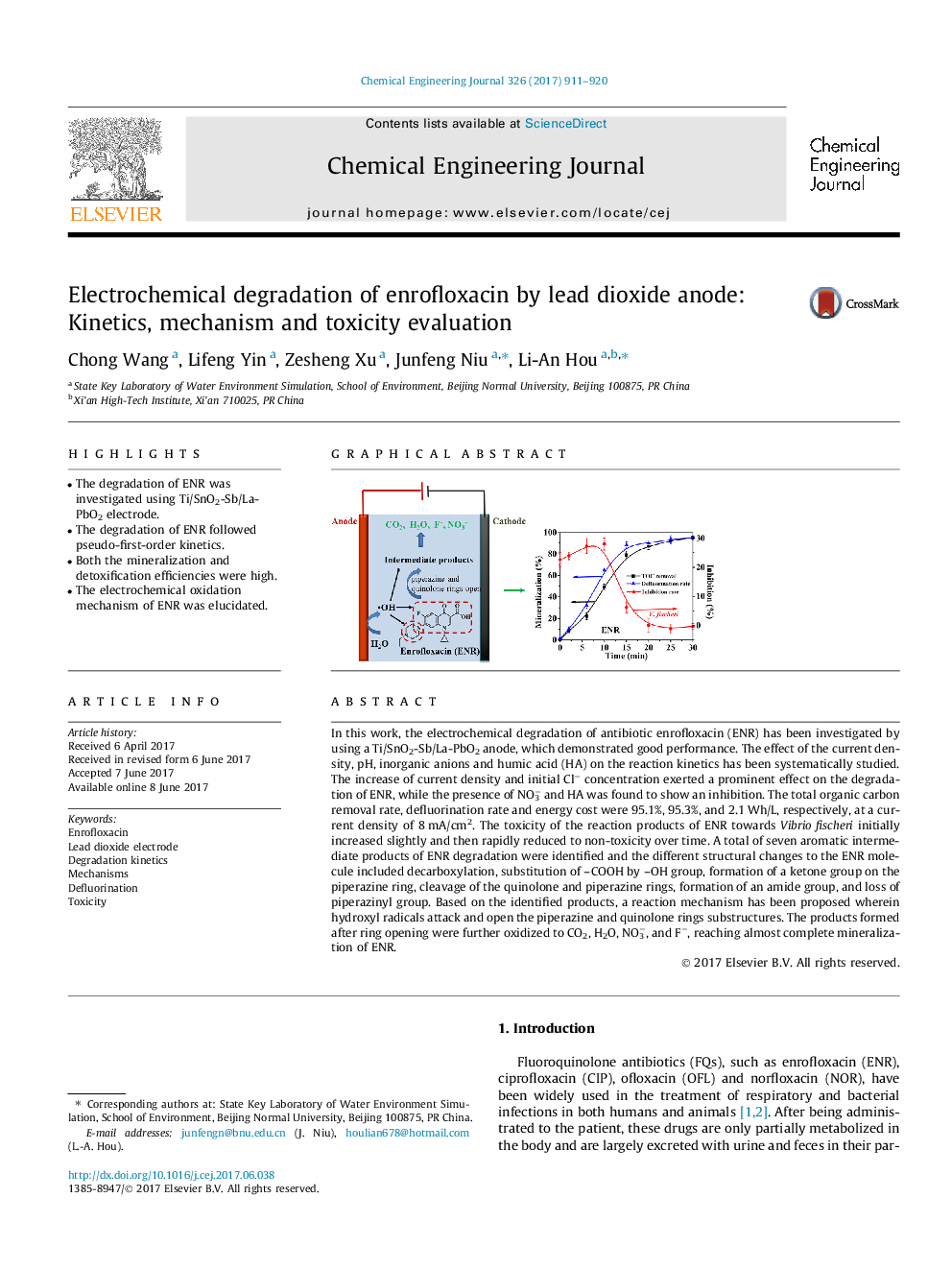| کد مقاله | کد نشریه | سال انتشار | مقاله انگلیسی | نسخه تمام متن |
|---|---|---|---|---|
| 6465526 | 1422952 | 2017 | 10 صفحه PDF | دانلود رایگان |
- The degradation of ENR was investigated using Ti/SnO2-Sb/La-PbO2 electrode.
- The degradation of ENR followed pseudo-first-order kinetics.
- Both the mineralization and detoxification efficiencies were high.
- The electrochemical oxidation mechanism of ENR was elucidated.
In this work, the electrochemical degradation of antibiotic enrofloxacin (ENR) has been investigated by using a Ti/SnO2-Sb/La-PbO2 anode, which demonstrated good performance. The effect of the current density, pH, inorganic anions and humic acid (HA) on the reaction kinetics has been systematically studied. The increase of current density and initial Clâ concentration exerted a prominent effect on the degradation of ENR, while the presence of NO3â and HA was found to show an inhibition. The total organic carbon removal rate, defluorination rate and energy cost were 95.1%, 95.3%, and 2.1Â Wh/L, respectively, at a current density of 8Â mA/cm2. The toxicity of the reaction products of ENR towards Vibrio fischeri initially increased slightly and then rapidly reduced to non-toxicity over time. A total of seven aromatic intermediate products of ENR degradation were identified and the different structural changes to the ENR molecule included decarboxylation, substitution of -COOH by -OH group, formation of a ketone group on the piperazine ring, cleavage of the quinolone and piperazine rings, formation of an amide group, and loss of piperazinyl group. Based on the identified products, a reaction mechanism has been proposed wherein hydroxyl radicals attack and open the piperazine and quinolone rings substructures. The products formed after ring opening were further oxidized to CO2, H2O, NO3â, and Fâ, reaching almost complete mineralization of ENR.
94
Journal: Chemical Engineering Journal - Volume 326, 15 October 2017, Pages 911-920
